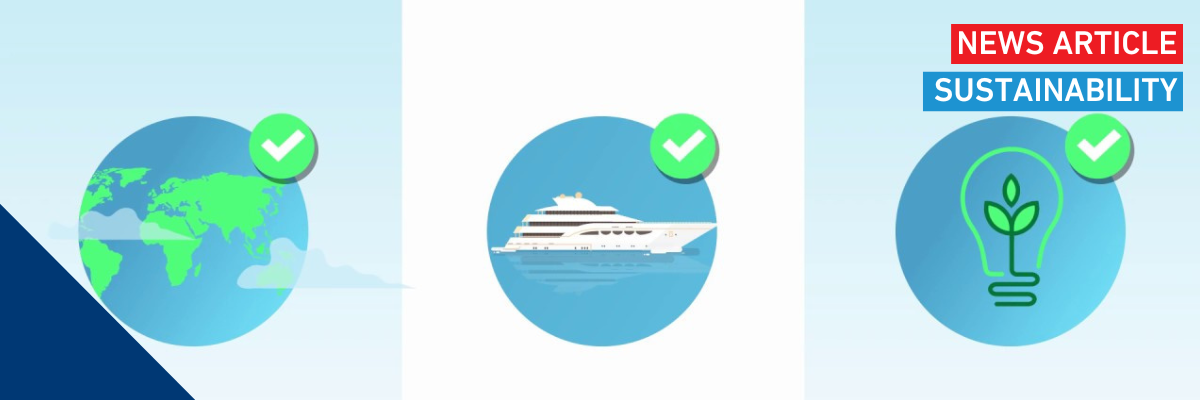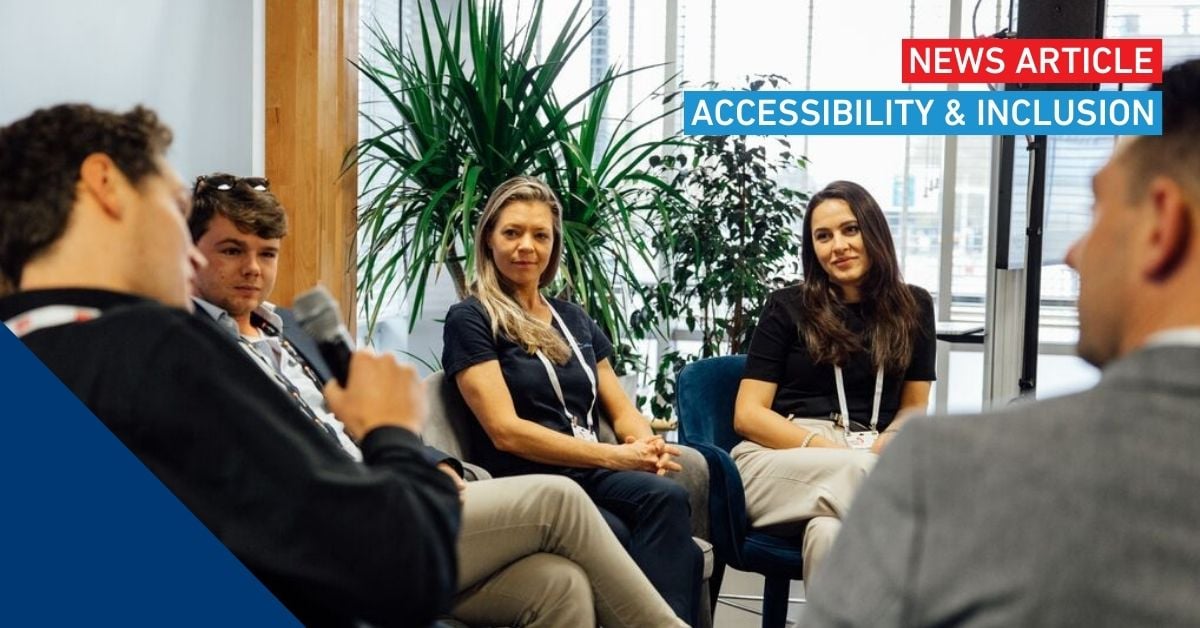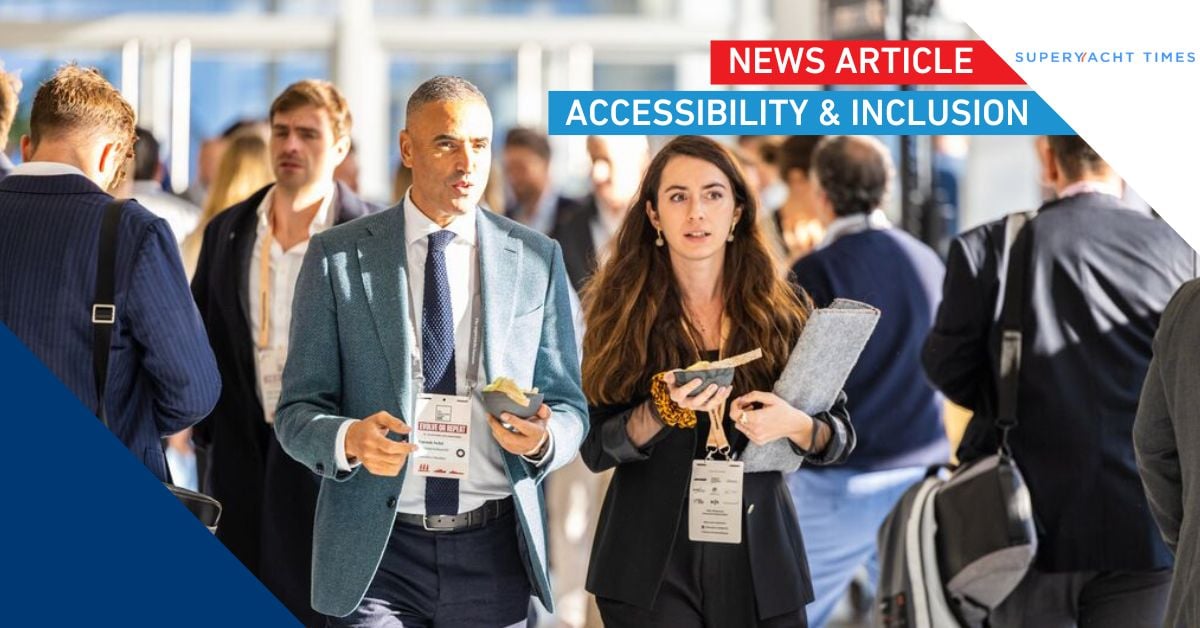Scientific tool identifies sustainable solutions
Oil cleaning that eliminates the need for oil changes, adaptive air conditioning that cuts energy use in half and high gloss coating that evaporates less chemicals are some of the new products that have been verified as the more sustainable solutions for yachts. They were examined using a Life Cycle Assessment method which evaluates material resources, production and environmental performance of the products. The list of LCA verified solutions at the Water Revolution Foundation is growing.
Yachtsmen’s claims and yard assurance that their yachts are optimised to cause minimal pollution or other harm to the natural environment, need proof. Having a bamboo dinghy on a large yacht that burns vast amounts of diesel, does not transform the holiday on the water into environmentally beneficial leisure time.
The super yacht industry communicates the accelerating impact they have on sustainable maritime technology, but still large pleasure craft run fossil fuel combustion engines to power the household and propulsion energy demands. Activists increasingly address the responsibility of yacht owners and yacht builders to end – or at least minimise – their pollution.
Demonstrating the innovative efforts in the industry and aboard yachts and providing transparency about their environmental footprint can be a way for the yachting community to partner up with activists and NGO’s to promote sustainable technology and reduce pollution in the whole maritime industry. Both pleasure craft and commercial shipping may benefit from green innovations.
Footprint
Proof starts with investigating the use of energy of yachts and the equipment on board from cradle to cradle. Life Cycle Assessment tools have been developed for several industries.
In leisure boating, most commonly known tools are the MarineShift 360 tool and the Yachting 4.0 method of calculating the environmental footprints of yachts and their equipment as it has been developed by Dr. Vienna Eleuteri. Eleuteri, a scientist specialising in researching tools to improve sustainable relations of industries with nature, has been working on this computational sustainability model together with the University of Bologna.
WRF is working in conjunction with Tetis Institute SRL (University of Genoa spin-off), Alea Srl (Università di Modena e Reggio Emilia spin-off), and LCA Working Group (Università di Modena e Reggio Emilia spin-off) for the LCA they apply. Documents that show the outcome of the Life Cycle Assessments, can prove the reduced environmental impact of systems aboard yachts or even a yacht as a whole.
Solutions listed
Recently, some very interesting technologies have been assessed by the Water Revolution Foundation and have been rewarded with a certificate that affirms these solutions prove to result in much more environmentally responsible operations with yachts than conventional industry standards.
An overview listing is growing with all kinds of yachting technology that helps reduce the environmental impact of yachts. Yards and owners can choose to apply these more sustainable solutions.
Lubricant for life
One of the recently awarded technologies is the RecondOil system by SKF. The Swedish manufacturer, best known for its ball bearings, also develops and builds hydraulic and fully electric stabilisers for yachts.
Both bearings and hydraulics depend on oil for lubrication and power transfer. The oil needs to be changed on a frequent basis, because it gets polluted and deteriorates. RecondOil is a system that cleans the oil so thoroughly, that it gets cleaner in the cleaning process than it was when it was first applied in the lubrication system. Oil does not need to be changed any more. The same oil can be used throughout the lifetime of any hydraulic system or gear box or propeller axis lubrication system. “The RecondOil system is added to an oil circuit as a kidney,” Mats Norling of SKF explains. The Technical Sales & Business Manager explains how the superior cleaning of oil is achieved: “RecondOil applies DST: Double Separation Technology.
In the first stage, particles that pollute the oil are captured by a chemical booster. Very small Nano particles are captured from the oil through a chemical process. These very small particles clump together through this process and are then led through a mechanical filter. This is a cellulose filter.
The innovation from SKF is to combine two filtering solutions. Swedish start-up RecondOil has developed the chemical filtration method some 20 years ago, while another Swedish company did develop the cellulose filter – called Europafilter - already 35 years ago. Both products have been in use. Around three years ago, both companies were incorporated in SKF and we have combined both filtration methods into the RecondOil Box.
Over their lifetime, hydraulic systems and lubricating systems equipped with the RecondOil Box reduce the carbon footprint with up to 96 percent compared to a traditional oil cycle.” Since its introduction, about 15 commercial vessels have been equipped with the revolutionary oil cleaning system. A number of yards have chosen to build the box into their large yachts.
Soon, the first yachts that have the RecondOil box on board, will be launched and start cruising. “The effectiveness of RecondOil has been proven,” Sales Manager Michael Christiansen adds. “SKF uses it in many factories and at growing numbers. RecondOil makes lubricating oil cleaner than it comes from the refinery.
As a result, lubrication of surfaces and bearings is more effective and the efficiency of machines will improve while wear and tear will be less. Not only do we improve the carbon footprint, we also optimize the machinery and save fuel because of reduced friction.”
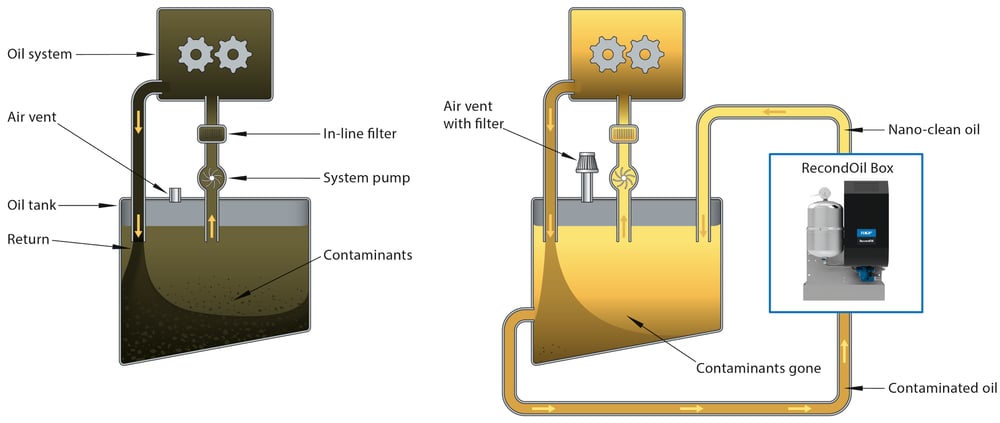
Adaptive cooling
RecondOil got their certificate from the WRF Yacht Assessment in May 2023 and is one of 10 Verified Solutions by WRF today. Last month of April, the Italian manufacturer of air conditioning systems Termodinamica got their certificate for the Marine Inverter Air Conditioning with Direct Refrigerant Expansion.
This system is designed to adapt the cooling capacity to the actual demand for cooling in different cabins aboard a yacht. The system uses cooling coils of varying temperature. The ability to adapt to the temperature wishes in different cabins increases comfort but also reduces the use of energy.
The Marine Inverter Air Conditioning system as it is called, reduces energy consumption by 50 up to 70 per cent. Considering the fact that aboard a lot of yachts, air conditioning takes up to 40 per cent of total energy, this results in a considerable reduction of energy – and thus fossil fuel – consumption.

“Sustainability is at the forefront of our clients' minds,” says Sales Director Hunter Parker at the Fort Lauderdale office. “The superyacht industry is rapidly moving towards more sustainable practices, evident in the rising popularity of electrification and hybrid systems.
HVAC systems, being a major component of a yacht's auxiliary load, play a crucial role in this shift. Our solutions significantly reduce energy consumption, making electrification feasible while ensuring the luxurious experience our clients expect.”
Clean finish
Another recent addition to the hub of Verified Solutions of WRF is AkzoNobel’s Awlgrip HDT (High Definition Technology). This top coat for painting a yacht’s hull consists less solvent and has a lower VOC (volatile organic compound) compared to other top coat finishing paints.
“WRF’s recognition and support of our product is a testament to our innovation and commitment to more sustainable yachting,” says Matthew Anzardo, Global Yacht Segment Manager, AkzoNobel’s Yacht Coating. “Across our brands and business, we share the same goal of reducing the environmental impact of coating solutions through collaboration and innovation.”
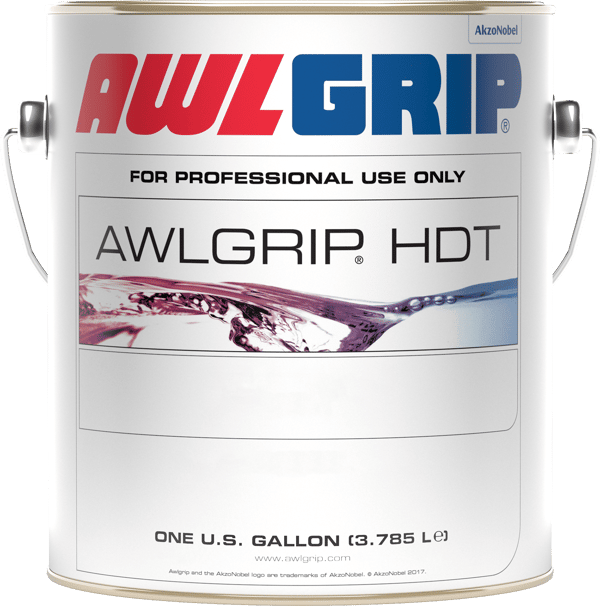
Comparitive
Alexey Shifman, Programme Director with the Water Revolution Foudation, explains: “The LCA conducted by WRF is a comparative study that evaluates an innovative solution against Business As Usual (BAU) within the same product category.
This comparative LCA assesses nine environmental impact parameters and summarizes the environmental impact into a single EcoPoint for both the innovative solution and BAU. Based on the results of this comparative study, we can determine whether the innovative product has better environmental performance than the BAU scenario. If the assessed product shows improved environmental performance, the Water Revolution Foundation declares the product's LCA as verified.”
In regards to the recent additions to the hub of verified solutions, he adds: “AkzoNobel, Termodinamcia and SKF are producing very important products for the superyacht industry. At the current state of GHG and sustainability reporting, companies are obliged to do an independent LCA evaluation to understand the environmental impact of their products and processes.
Additionally the obtained results of LCA study are crucial for shipyards to evaluate the environmental impact of the yachts they build in total.”

